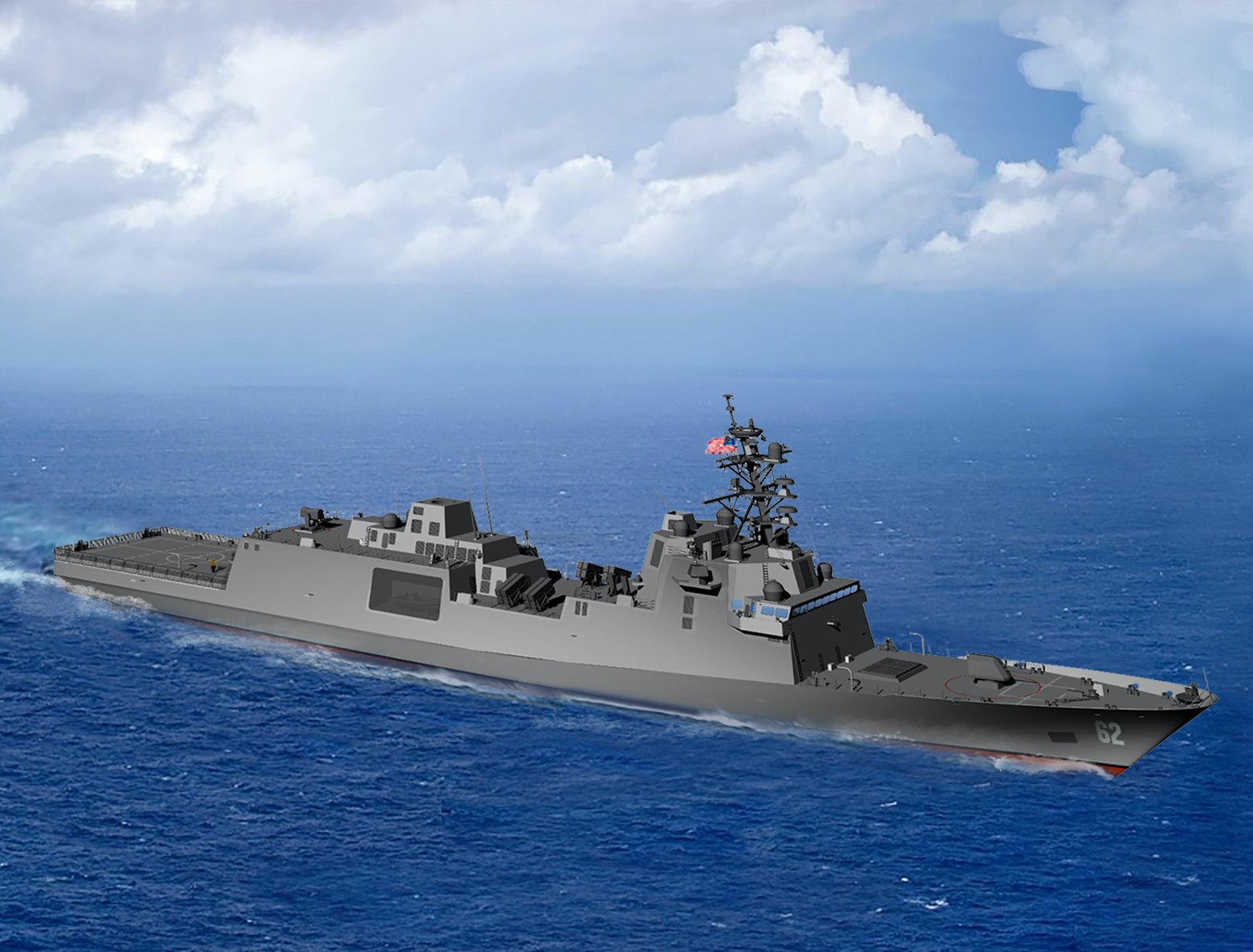
BALTIMORE, Md. – The Navy will name the first of its new class of frigates USS Constellation (FFG-62), in a nod to one of the original six frigates the Navy bought just after the Revolutionary War.
Navy Secretary Kenneth Braithwaite announced today that the first FFG(X) guided-missile frigate would be named Constellation, making the announcement from the second ship to bear that name: USS Constellation, a sloop-of-war launched in 1854 and decommissioned in 1933 that is preserved as a National Historic Landmark in Baltimore, Md.
“George Washington personally selected the name Constellation. It refers to the constellation of stars that have adorned our flag, from the original circle of 13, to the 15 gracing the Star Spangled Banner across the harbor above Fort McHenry, to the 50 that fly from the mast of every Navy ship today,” he said in a video, filmed today in Baltimore’s inner harbor on the deck of the wooden-hulled warship.
“The number of stars on our nation’s flag may have changed with every generation of Constellation, but her spirit and pride have endured.”
Braithwaite told USNI News after filming the announcement video that he chose the name as part of his effort to recapture Navy pride and culture, a topic he made waves with during his confirmation hearing with the Senate Armed Services Committee this spring.
“I believe in something called service above self – I think that in this world that we’re in today that we need to remember that being part of something that we hold in high regards sets us apart from the norm, and there’s a sense of pride in service,” he told USNI News in June.
Today, he said selecting the name Constellation will help in “recapturing that awareness, that recognition of being part of something greater than self. When you tie that together and you allow a sailor to serve on a ship that has such a glorious history in its name, that stuff just bubbles to the top and makes people feel proud and makes them feel that they are a part of something special and part of something that’s greater than self. So pretty cool stuff. And that’s what we’re really focused on, in reestablishing some of that culture and the importance of heritage in the Navy and Marine Corps.”
Four U.S. Navy ships have born this name in the past: a 38-gun frigate launched in 1797 and scrapped in 1853; the sloop-of-war that spent much of the Civil War operating in the Mediterranean; USS Constellation (CC-2), a battlecruiser laid down in 1920 that was cancelled in 1923; and USS Constellation (CV-64), a Kitty Hawk-class aircraft carrier that served from 1961 to 2003.
This announcement comes after a previous effort by Acting Secretary of the Navy Thomas Modly in April to name the lead ship USS Agility. He wrote in a memo that he wanted to name the FFG(X) class “after the kind of uniquely American brand of agility — agility that wins, and agility that will shape our maritime presence and ability to fight wherever we are called upon to do so,” and that other names in the class could include “other unique human qualities that help define what it means to be an American sailor and Marine,” such as Dauntless, Endeavor and Intrepid, according to the memo obtained by USNI News just before Modly resigned as acting secretary.
Though the Navy secretary has total discretion in ship names, “previous classes of U.S. Navy frigates, like Navy destroyers, were generally named for naval leaders and heroes,” according to a Congressional Research Service report on ship naming conventions,
The Navy awarded a contract to Fincantieri on April 30 for the first frigate in the class. The $795-million contract allows for as many as nine additional ships as contract options.
According to current plans, the first frigate will deliver by 2026 and reach initial operational capability by 2030, with the fleet growing by two hulls – or perhaps more – a year after that.
The Navy has already talked about accelerating frigate production to quickly boost the number of small surface combatants in the fleet, in line with its previous long-range shipbuilding plans and the new Battle Force 2045 plan, announced on Tuesday by Defense Secretary Mark Esper, that resulted from a Pentagon-led effort this year to study what the Navy would need to look like to beat China in a high-end conflict. If the Navy were to accelerate frigate production, it has left open the possibility of contracting with a second yard to build the same ship that Fincantieri designed, much like the Navy has two contractors building the Arleigh Burke-class destroyers.





